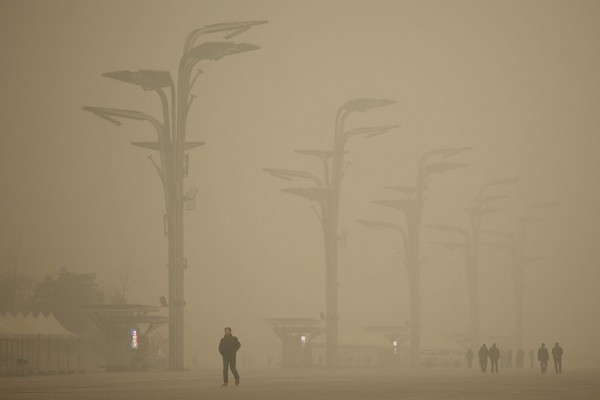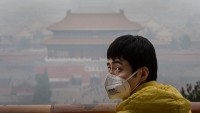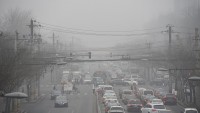Greenpeace: Most Cities in China Failed Air Quaility Evaluations in 2015
| Alexis Villarias | | Jan 25, 2016 02:46 PM EST |
(Photo : Getty Images) Of the 366 cities monitored, 80 percent that showed pollution levels higher than the national standards pinned the blame on coal consumption.
Despite improvements in some of the worst-hit areas, almost 300 Chinese cities still failed to meet national standards for air quality last year, Greenpeace announced on Wednesday, Jan. 20.
The average level of PM2.5 particulates in the 366 cities monitored was reported to be more than five times the maximum recommended levels by the World Health Organization, according to government data collected by Greenpeace.
Like Us on Facebook
The determining factor is fine pollutant particles smaller than 2.5 microns in diameter that can penetrate the lungs and cause the greatest harm to a person's health. Of the 366 cities monitored, 80 percent that showed pollution levels higher than the national standards pinned the blame on coal consumption. According to the report, China allows for a yearly average of 35 micrograms per cubic metre compared to the annual WHO standard of 10 micrograms per cubic metre. None of the cities was able to meet WHO standards.
According to the survey, the nation's capital, Beijing, ranked 27th in the most polluted city with an average of 80.4 micrograms per cubic metre although it has already decreased by 3.3 percent.
Towards the end of the year in 2015, Beijing had 26 days of heavy air pollution.
Meanwhile, the industrial heartland of Hebei province was China's second most polluted city in 2015 with an average of 107 micrograms per cubic metre.
The most polluted city with an average of 119.1 micrograms per cubic metre was Kashgar near the Pakistan border along the far western region of Xinjiang. The city is often hit by dust and sand storms.
In an accompanying statement by Greenpeace, the main reason for the heavy smog in Beijing and the neighbouring areas this winter was the wind and humidity conditions.
The Greenpeace data was based on official data from China's Ministry of Environmental Protection.
TagsGreenpeace, China Air Pollution, Beijing Air Pollution, China PM2.5 air pollution, China environmental pollution, Coal Power Plants
©2015 Chinatopix All rights reserved. Do not reproduce without permission
EDITOR'S PICKS
-

Did the Trump administration just announce plans for a trade war with ‘hostile’ China and Russia?
-

US Senate passes Taiwan travel bill slammed by China
-

As Yan Sihong’s family grieves, here are other Chinese students who went missing abroad. Some have never been found
-

Beijing blasts Western critics who ‘smear China’ with the term sharp power
-

China Envoy Seeks to Defuse Tensions With U.S. as a Trade War Brews
-

Singapore's Deputy PM Provides Bitcoin Vote of Confidence Amid China's Blanket Bans
-

China warns investors over risks in overseas virtual currency trading
-

Chinese government most trustworthy: survey
-

Kashima Antlers On Course For Back-To-Back Titles
MOST POPULAR
LATEST NEWS
Zhou Yongkang: China's Former Security Chief Sentenced to Life in Prison

China's former Chief of the Ministry of Public Security, Zhou Yongkang, has been given a life sentence after he was found guilty of abusing his office, bribery and deliberately ... Full Article
TRENDING STORY

China Pork Prices Expected to Stabilize As The Supplies Recover

Elephone P9000 Smartphone is now on Sale on Amazon India

There's a Big Chance Cliffhangers Won't Still Be Resolved When Grey's Anatomy Season 13 Returns

Supreme Court Ruled on Samsung vs Apple Dispute for Patent Infringement

Microsoft Surface Pro 5 Rumors and Release Date: What is the Latest?













